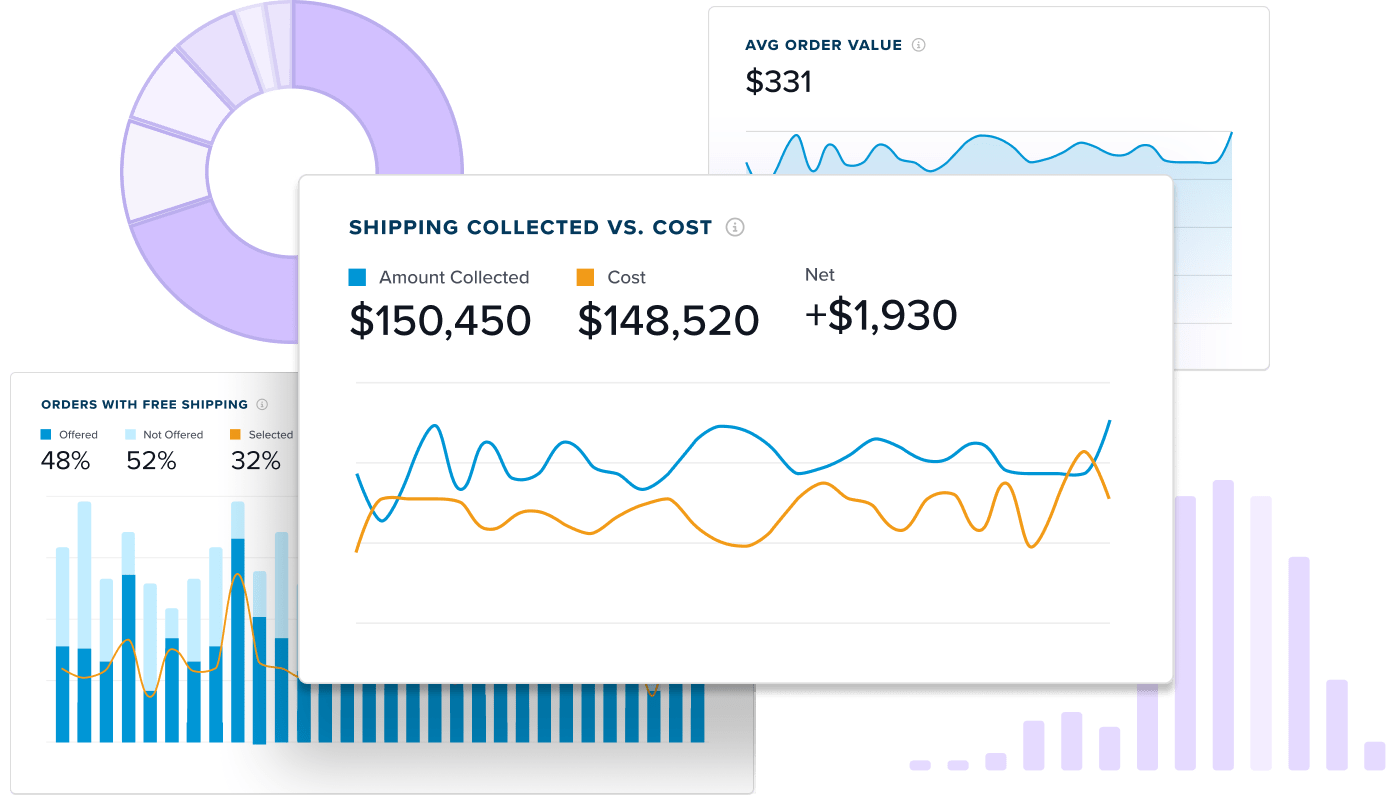The US B2B eCommerce sales will reach an estimated $3 Trillion by 2027.
Running a B2B (business-to-business) eCommerce store comes with its fair share of challenges, and one of the biggest hurdles many merchants face is managing shipping. With the right B2B eCommerce platform, you can streamline your shipping processes, improve accuracy, and save money— all while delivering the seamless buying experience your customers crave.
The B2B shipping process may become overwhelming, whether you’re shipping large bulk orders, dealing with multiple carriers, or handling international shipping complexities. In this article, we’ll explore:
- Why shipping is uniquely challenging for B2B eCommerce.
- Features to prioritize in a B2B eCommerce platform.
- Best practices for streamlining shipping processes.
Let’s dive into how you can optimize your B2B shipping strategy for success.
Why Is Shipping So Challenging for B2B eCommerce?
Shipping in B2B eCommerce is different from shipping in B2C (business-to-consumer) because of the size and scale of the orders, as well as the logistics involved. The size, scale, and logistics of orders introduce unique challenges.
- Managing multiple carriers: With many carriers offering different shipping rates and services, it can be difficult to choose the best one for each order. Finding the most cost-effective and reliable option can be time-consuming.
- Coordinating large inventories: B2B operations handle vast product ranges, requiring careful planning and advanced tools to ensure timely and accurate shipments.
- International shipping: Cross-border shipping involves taxes, duties, and regulations that vary by country. Without the right tools, managing these complexities can slow down operations and increase costs.
- Avoiding delays and inaccuracies: Delivering large, bulk orders on time is critical for maintaining customer trust. Shipping errors or delays can lead to dissatisfied clients and lost revenue.
These challenges underscore the importance of having a robust platform to streamline operations and manage shipping complexities effectively.
How a B2B eCommerce Platform Simplifies Shipping
A great shipping platform is like having a super-organized friend who handles everything for you. Here are some features you should look for:
- Live Shipping Rates: Display real-time carrier rates for FedEx, UPS, and LTL freight companies. This not only improves accuracy but also builds customer trust by avoiding surprise fees at checkout.
- Multi-Warehouse Shipping: For businesses shipping from multiple locations, the platform should automatically select the closest warehouse to the customer, reducing transit time and costs.
- Custom Shipping Rules: Whether offering VIP discounts or adding surcharges for specific products, the platform should allow you to configure rules that align with your business needs.
- Delivery Date Accuracy: Providing precise delivery windows improves customer satisfaction. Advanced platforms account for factors like same-day shipping cutoffs, blackout dates, and lead times to calculate accurate ETAs.
- Packing Optimization: Automated packing tools calculate the best box or pallet size for each order, reducing waste and cutting costs.
- Rate Shopping: Compare carrier options in real time to select the most cost-effective and reliable shipping method for each order.
Best Practices for Managing Shipping In B2B eCommerce Platforms
Having the right platform is only half the battle. Implementing best practices ensures you’re making the most of the technology.
1. Choosing the Right Carrier
Not all carriers are created equal, and different orders may require different solutions. For international shipping, a carrier with a strong global network is essential. For cost savings, carriers offering competitive bulk rates might be your best bet.
2. Optimizing Shipping Routes
For businesses with multiple orders and locations, route optimization saves both time and money. Platforms with built-in route management features can identify the most efficient paths for deliveries, cutting fuel costs and reducing delivery times.
3. Setting Clear Shipping Policies
Transparent shipping policies set customer expectations and minimize misunderstandings. Include information on:
- Shipping costs.
- Estimated delivery times.
- Procedures for handling delays or damaged goods.
4. Managing Returns Effectively
Returns are inevitable, but they don’t have to be a hassle. Ensure your platform supports easy return processing for bulk orders, including automated labels, refunds, and restocking processes.
Leveraging Technology for Better Shipping Efficiency
Modern technology is transforming how B2B businesses approach shipping. From automation to AI, here’s how you can leverage the latest advancements:
1. Shipping Automation
Automation eliminates repetitive tasks, like generating shipping labels or sending notifications to customers. By reducing manual effort, you speed up operations and minimize errors.
2. Data-Driven Decisions
Advanced platforms collect data on shipping performance, helping you identify trends, such as:
- Which carriers are most reliable.
- Which shipping methods are cost-effective.
Use this data to make smarter decisions and optimize your logistics strategy.
3. AI and Machine Learning
Emerging technologies like AI and machine learning are being used to optimize shipping operations. For example, these technologies can help predict delivery times more accurately, analyze shipping costs, and even help improve inventory management.
Common Shipping Mistakes and How to Avoid Them
Even big businesses make mistakes when it comes to shipping. Here are some common ones and how to fix them:
- Surprise Costs: Don’t let customers see unexpected shipping fees at checkout. Use live rates to show accurate costs upfront.
- Ignoring Freight Shipping: If you ship big items, make sure your platform supports LTL freight.
- Improper Packaging: Using incorrect box sizes can lead to damaged goods and higher shipping fees. Packing tools help ensure the right materials are used every time.
- Missing Discounts: Many carriers offer discounts for bulk shipments. Make sure your platform helps you take advantage of them.
Simplifying B2B Shipping with the Right Solution
Shipping doesn’t have to be a headache for B2B eCommerce merchants. By implementing a robust shipping management solutions with powerful features, you can streamline operations, reduce costs, and ensure a smoother experience for both you and your customers.
ShipperHQ offers a comprehensive solution for B2B eCommerce merchants who want to optimize their shipping processes.
- Accurate Shipping Rates: Provide precise, real-time shipping rates based on various factors like weight, destination, and service level.
- Multi-Origin Shipping: Seamlessly manage multiple warehouses and locations to ensure efficient fulfillment and shipping processes.
- Customized Delivery Options: Offer tailored delivery methods such as specific delivery windows, expedited shipping, and freight options to meet unique B2B needs.
- Zero Coding: Stay agile and adapt to changing business needs without relying on developers.








